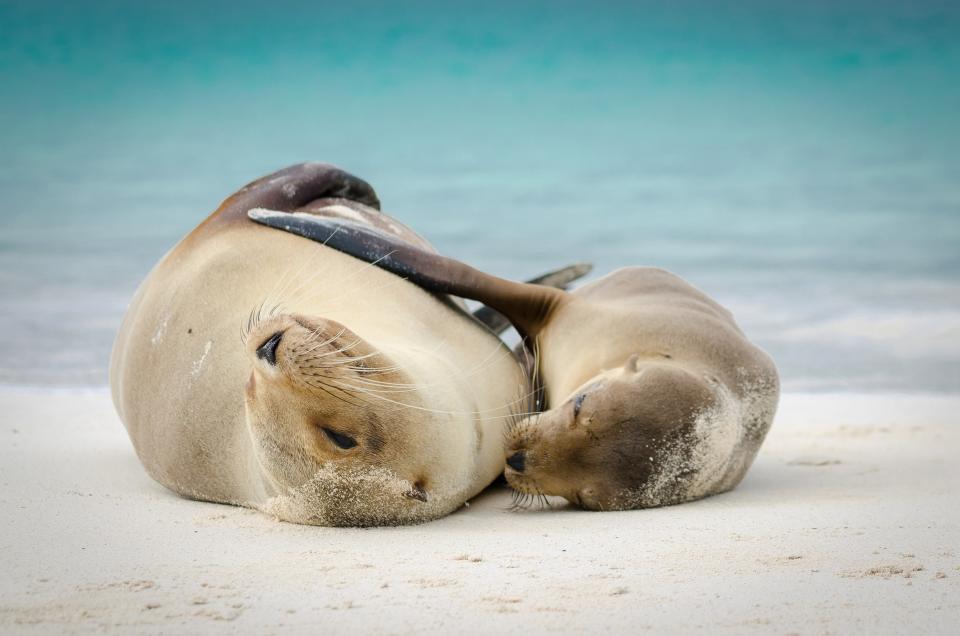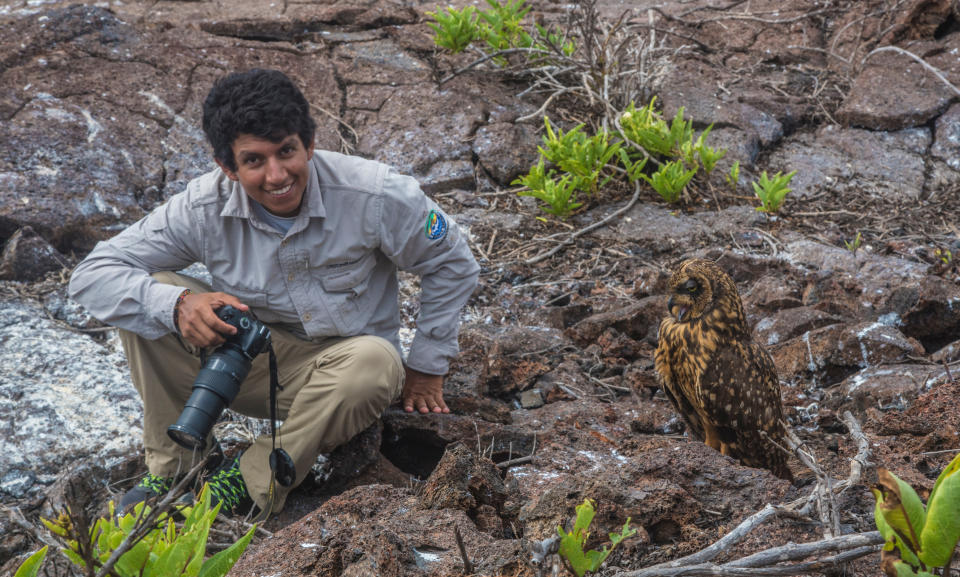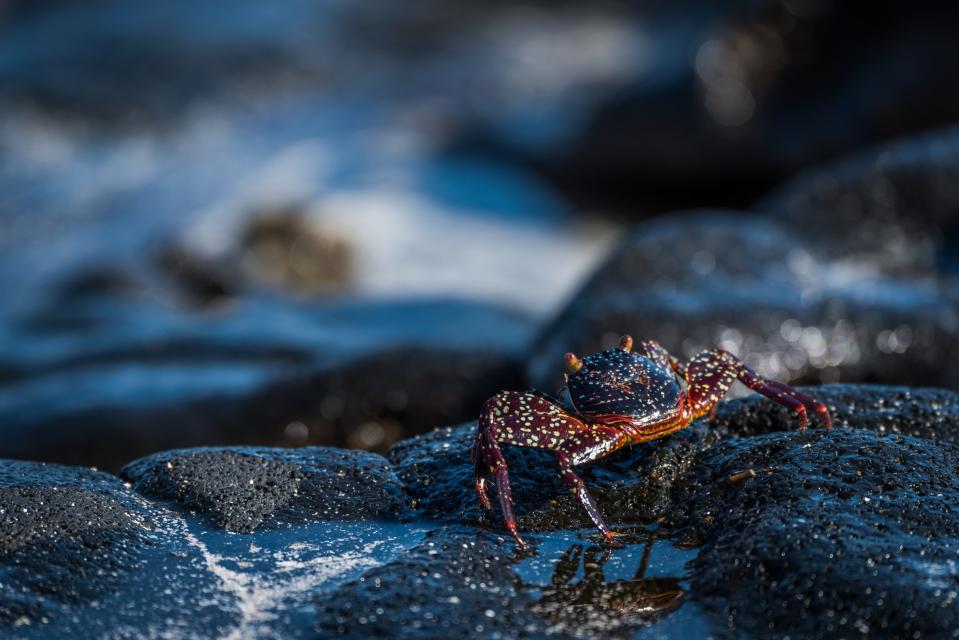Meet the tour guide tasked with preserving the most pristine islands on the planet

Growing up in the Galápagos Islands, tour guide Christopher Naranjo had never been much concerned with the cruise ships that came and went from his remarkable homeland.
Living in Puerto Ayora on Santa Cruz Island – the second largest in the Galápagos archipelago – he spent much of his time playing football on the beach, with the ebb and flow of ships and tourists from the island nothing more than a backdrop to a carefree childhood.
It was an everyday part of life that, for the most part, went unnoticed. Travelling is an expensive prospect for young islanders, so many never leave their island of birth.

But when he was 15 years old, Naranjo boarded one of those cruise ships and found his true passion. He and a handful of other schoolchildren had been sponsored by a local tour operator to take a voyage of discovery on board the MV Santa Cruz, as part of a then-new programme to give young locals the chance to learn more about their homeland, which squats in the Pacific Ocean some 563 miles off the coast of mainland Ecuador.
During his two days on board, Naranjo experienced for himself the archipelago’s rich diversity and the stunning array of unique wildlife that populates its rugged, volcanic landscapes – and finally understood what draws the world’s travellers to his home.
The group spent time learning about the Galápagos’s incredible natural history, the conservation issues and, not least, the challenges presented by a tourism trade that has become intrinsic to the local economy.
A post shared by Metropolitan Touring (@metropolitantouring) on Mar 1, 2016 at 10:26am PST
By the time he disembarked, Naranjo knew, with absolute certainty, what he wanted to do next. He spent the next few years dedicating all the time he could to his passion for the local wildlife. This included volunteering with the Galápagos National Park Service during his holidays and working on the giant tortoise breeding programme at the Fausto Llerena Tortoise Center.
It was a natural step that upon leaving school Naranjo immediately began studying to become a naturalist guide and, shortly after qualifying, went to work for Metropolitan Touring, the sponsor of the school trip.
Now 27, he works from the company’s cruise ship, Santa Cruz II (which replaced the original ship last year), guiding small groups of travellers around the islands.

“My time on MV Santa Cruz made me realise that there was something about the creatures here that presented an opportunity,” he said, when I spoke to him during one of his infrequent stints of shore leave.
“But also we, as locals, are responsible for preserving this pristine place. Everybody is responsible.”
It’s a responsibility he bears readily. Even before he was exposed to the extraordinary biodiversity of the wider archipelago, Naranjo was well acquainted with the special relationship that islanders enjoy with the local wildlife. Even on Santa Cruz Island, which is inhabited by some 12,000 people, the pelicans, gulls, marine iguanas and sea lions co-exist with their human neighbours.
It’s an environment unlike any other, and one that requires constant vigilance in order to protect it. By law, all visitors to the Galapagos must be accompanied by a highly trained local guide capable of serving on the front line of preserving the delicate ecosystem that protects the iconic species and brings the visitors the islands rely on. “We’re rangers as well as guides,” says Naranjo.

“We have to ensure people do not touch the animals, give them food or disturb them in any way.”
A common faux pas made by visitors is wandering off the islands’ well-marked, authorised paths and into the roped-off areas, and thereby interfering with the creatures’ breeding habitats. “Of course there are some who don’t respect the rules,” he says. “We have to talk to tour leaders, and maybe ships’ captains, and make sure they don’t come back on shore.”
It’s a crucial role in such a precarious environment, and the schedule is pretty gruelling, too. Naranjo’s shifts, if you can call them that, last six weeks at a time, punctuated by two-week breaks back at his family home (where he spends much of his time playing guitar in Ecuadorian folk bands).
A post shared by Metropolitan Touring (@metropolitantouring) on Mar 24, 2017 at 5:28am PDT
Although relaxed throughout much of our chat, he becomes increasingly animated as we move on to discuss the topic of conservation. “There are more tourists than ever before,” he says. “There is a cap of 120,000 visitors a year, but it is being raised to 170,000. We’re just not prepared for the extra numbers.
“The animals don’t fear humans and that’s something we want to preserve, but with more tourists visiting we have to increase walking areas. It will only get more difficult.”
That Metropolitan Touring continues to sponsor young Galapagueños is part of the appeal of working with the company which, in the Sixties, became the first to organise boat tours to the Galapagos and has been pioneering sustainable tourism to the islands ever since.
A post shared by Metropolitan Touring (@metropolitantouring) on Jun 21, 2017 at 6:39am PDT
The MV Santa Cruz, the ship on which Naranjo first ventured, was retired from service in 2015. “I was sorry to see it go,” he says. “It gave me the opportunity to learn so much and I had a real friendship with the other workers. We also had a real connection with the ship.”
Naranjo has no desire to seek new horizons. His passion is, and always has been, protecting this remarkable little pocket of the Pacific and showing it to anyone who wants to see these “little planets”, as he describes them, for themselves.



